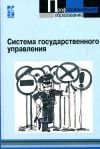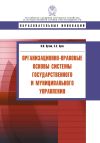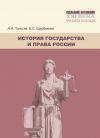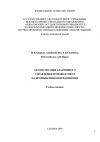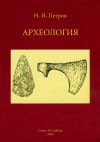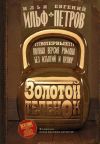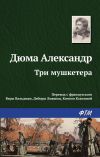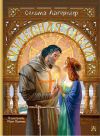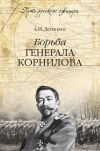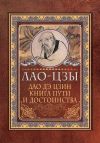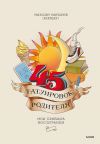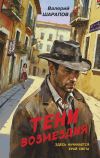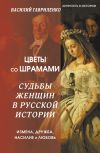Текст книги "Glimpses of Britain. Учебное пособие"

Автор книги: Алексей Минченков
Жанр: Иностранные языки, Наука и Образование
Возрастные ограничения: +12
сообщить о неприемлемом содержимом
Текущая страница: 4 (всего у книги 15 страниц) [доступный отрывок для чтения: 5 страниц]

Elisabeth I
Fortunately, by the time of her accession Elizabeth was already an accomplished political leader, a great actress on the political stage who knew how to win popular support, she had keen political acumen and, most importantly, a genius for choosing the right people to work with. As a consequence, there gradually emerged a tightly-knit group of educated and highly intelligent officials who gave the kingdom a sustained stability. Elizabeth’s Principal Secretary and chief counsellor was William Cecil, who was later to become also her Lord Treasurer. It was a great partnership which lasted 40 years and whose main purpose was no longer revolution but consolidation, to bring peace to the country by building on the foundations laid by Henry VIII in the 1530s. Cecil’s brother-in-law Nicholas Bacon was Lord Chancellor and Francis Walsingham, officially a secretary of state to the queen, was in effect the head of Elizabethan intelligence service.
What Elizabeth and her government eventually managed to achieve in matters of religion is often referred to as Elizabethan religious settlement. The queen, who was not particularly religious herself, wanted to return to how things stood shortly after Henry VIII’s death. But her first Parliament wanted a more radical form of Protestantism, so did the people she wanted to work with. At her accession England was still Catholic. What became the Anglican Church slowly emerged as the reign progressed. It was shaped by political events as a cross between Catholic and what was called Puritan. The Puritans wanted the abolition of the bishops and any trace of ritual reminiscent of Rome. The Puritan doctrine modeled on Calvinism and the Church of Geneva with its democratic republicanism didn’t appeal to the queen, who thought and acted on her successor’s principle ‘No bishop, no king’.
William Cecil’s family originated in Herefordshire. Both his father and grandfather were able lawyers and found employment at Court under Henry VIII and Edward VI. William, born in 1520, gave support to Elizabeth during the repressive reign of her sister. When she came to the throne the Cecils already owned estates at Burghley and Wothorpe. In 1571 Sir William Cecil was created Lord Burghley, and grants of land and Crown offices continued throughout his long life. A measure of his importance is a magnificent palace near Stamford, Lincolnshire, called Burghley House. The House was completed in the reign of Elizabeth and became the centre of a dynasty. [36; 37] William Cecil’s elder son Thomas was created Earl of Exeter in 1605 and the 10th Earl became the 1st Marquess in 1801. The descendants of the 1st Earl have occupied Burghley House ever since the 17th century. William Cecil’s second son, Robert, was created Earl of Salisbury and his descendants were also elevated to the title of a marquess. This branch of the family owns Hatfield House near London. [48]
In 1559 Elizabeth’s first Parliament passed the Act of Supremacy, which abolished papal allegiance and recognized the queen as Supreme Governor of the Church of England. She wanted to return to the moderate and largely Catholic Prayer Book of 1549, but was forced to allow the restoration of the more radical version of 1552, although some of the more extreme attitudes were eliminated. Eventually this Prayer Book proved to be a golden mean, a chameleon that meant different things to different people. Parliament also passed the Act of Uniformity and in 1562 Cranmer’s 42 Articles of Faith were modified to 39 and adopted by the clergy. In 1571 these Articles were imposed by Parliament as the doctrine of the Anglican Church. With certain revisions, they have remained the basic doctrines of faith of the Established Church of England till the present day.
Although there were to be victims of religious persecution on both sides, they were few compared with the Continent. The Catholics during the first decade of the reign were abandoned by the pope, so that most of them conformed to the Church of England. In 1570, however, the pope excommunicated the queen, which meant that the subjects were absolved from any need to obey her. Most Catholics chose the queen. Those who still obeyed the pope were considered enemies of the state by Parliament. At first the queen resisted Parliament’s attempts to punish them, but eventually she had to give in: about 25 °Catholics suffered imprisonment or execution for their faith. Besides, fines for nonattendance at the Established Church were increased to Ј20. By the year Elizabeth died the Catholics were a small, tightly-knit community. Until the 19th century their faith eliminated them from public office and the universities.
For the queen the Puritans were an even greater threat, as they had allies at court, such as the queen’s favourite Robert Dudley, Earl of Leicester, and dominated the House of Commons. Time and again the queen vetoed any discussion of the topic in Parliament. The Puritans in effect failed and in the long run were forced, like the Catholics, out of the Church of England, especially towards the end of the reign when church courts began to stamp out non-conformity. As a result a degree of Catholic colour and ritual survived – the use of surplices, organs and music. Besides, the ecclesiastical hierarchy was preserved and bishops continued to be appointed by the sovereign.
Another formidable challenge to Elizabeth came from abroad. The leading Catholic powers, Spain and France, presented a very real threat, and the French Dauphin’s wife, Mary Queen of Scots [43], descended from Henry VII’s daughter, had claims to the English throne. Mary, whose husband became King of France in 1559, could hope for the blessing and support of the pope, and would certainly have the might and ambition of France behind her. In effect Elizabeth’s chief advantage from the very beginning of her reign was the rivalry between France and Spain. Fortunately for England the threat from France suddenly diminished as Mary’s husband King Francois died in 1560. Mary had no reason to remain in France and was forced back to Scotland.
It wasn’t a journey she wished to make. Having spent most of the preceding years at the civilized French court, she believed Scotland to be a backward, ignorant and unsophisticated land, feudal at best, barbaric at worst. Moreover, she faced a strong Protestant opposition. By 1560 the Scottish Protestant Lords inspired by the Calvinist preacher John Knox had imposed a new Reformation on Scotland, founding a new Kirk (Church), broadly Calvinist in spirit, outlawing the saying of the mass and rejecting the authority of the pope. Mary proved to be wilful and politically inept, and her reign was one long disaster, so much so that in 1568 she was forced to flee over the border to England to seek refuge there. Elizabeth found herself in a difficult position. Being both Elizabeth’s heir and a Catholic, Mary was a perpetual threat, but if she were allowed to return either to France or to Scotland she might become an even bigger one. So for the next 20 years Mary, who stood accused of complicity in the murder of her second husband Lord Darnley, was confined in a series of fortress-houses in the Midlands, while Elizabeth used her shrewdness and her marriageable hand to preserve England from foreign attack. France was held in check by considering marriage offers first from King Charles IX and later the Dukes of Anjou and Alenзon. When Philip II of Spain proposed marriage Elizabeth used the same tactics. Gradually the relations worsened as Elizabeth and Philip became the leaders of Protestant and Catholic camps. Elizabeth condoned raids on Spanish ships and gave secret aid to Spain’s rebelling subjects in the Netherlands, while Philip aided plots to place Mary on the English throne. The Scottish queen was to be the focus of a whole series of plots, the most important of which were the Ridolfi plot (1571), the Throckmorton plot (1583) and the Babington plot (1586).
The last of the three plots finally led to her trial and execution in 1587. This, added to the treaty signed by Elizabeth with the Dutch rebels in 1585, proved to be the last straw for Philip II. In 1588 he sent his fleet known as the great Armada, whose main purpose was to enable a Spanish Army to cross the Channel from the Netherlands and invade England. The plan failed, for the Armada was defeated, and only a small part of it managed to get back to Spain. The English victory was very important in moral terms, for it gave confidence and made real what Elizabethan government had striven to achieve, a united people held together by the Crown, Protestant, patriotic, fearless in defence of their queen and country. Politically it changed little, and the country was to remain involved in a costly war for the rest of the reign.
The man often remembered in connection with the defeat of the Spanish Armada is Sir Francis Drake. In 1577 he set sail on a voyage round the world and the success of his adventures made him very popular in England. The queen herself visited him on his ship, the Golden Hind, in order to knight him. In April 1587 he made a surprise attack on the Spanish fleet in Cadiz harbour and destroyed thirty ships. In June 1588, as the Armada approached, Lord Howard and Drake waited at Plymouth with ninety ships. Legend has it that Drake was playing a game of bowls on the cliffs above Plymouth harbour when the Armada was seen approaching. He is believed to have said ‘We have time to finish our game first and beat the Spaniards after.’ He certainly kept his word, though a rival version claims that these words were probably based on accurate calculation – the outgoing tide prevented the English ships from sailing anyway.
The threat of invasion wasn’t removed after 1588. England was always on the alert. Besides, by defeating a major Catholic power Elizabethan England had made itself a virtual leader of the Protestant camp in Europe. Now Elizabeth kept an army in the Netherlands, another one was occasionally sent to France, while a third one was attempting to subjugate Ireland, which could become a back door into England for Spain. On top of all that fleets were regularly sent against Spain. This leadership was very expensive. Financially, Elizabeth found herself in a very tight corner. Her noble Protestant courtiers demanded new and more aggressive military campaigns, so did the Protestant and Puritan members of the Commons. Yet the former were unable and the latter unwilling to give active financial support to the government. The nobility had been progressively losing their political and financial independence since the time of the first Tudor king and now, although still ranking as the top social class, the old nobility were no longer important in their own right, they only became so if they enjoyed the favour of the queen. Maintaining their social position was expensive and the resulting debts and sales of land made them pensioners rather than sponsors of the government. Besides granting offices, lands and honours, the queen, who could hardly let the nobility sink in ruin, had to help many with gifts and loans. For instance, Burghley’s son-in-law, the Earl of Oxford, received an annuity of Ј1,000, while the Earl of Leicester owed Ј21,000 for loans in 1579 (to get modern money equivalents we multiply by 300).
The poverty of the Elizabethan state explains many of its failures. The queen’s ordinary revenue – from selling crown lands, from customs and monopolies – amounted in the first twelve years of her reign to about Ј200,000 per year, and in the last decade to about Ј300,000 per year, a ridiculously small sum, and nothing approaching the revenue of her rivals, France and Spain. Out of the ordinary revenue she had to maintain herself, her Court and the whole system of government. Besides ordinary, there was extraordinary expenditure, the chief items in which were fortifications and war. Here the Crown was entitled to call on Parliament to come to its aid with taxation, which, however, was still regarded as something abnormal rather than normal; and Tudor monarchs who ruled with popular approval, looking to popularity as the source of their strength, had to bear this in mind. After 1588 Elizabeth was forced to call Parliament no less than 6 times to ask for subsidies. Parliamentary taxation gave her a little over Ј80,000 per annum, at a time when fleet maintenance cost Ј200,000 a year and an army in the Netherlands Ј125,000 a year.
The House of Commons in Elizabethan England represented the growing influence of the middle class – the gentry, the lawyers and the merchants. Its membership increased from 296 to 462 and it gained in power. The meeting of the Commons gave the members an opportunity to voice their grievances, which increased towards the end of the reign. Besides arguments over religious issues and foreign policy, there was a long-standing grievance about the monopolies. The latter were royal grants giving the sole right of making or selling some article, for example salt or starch. The monopolies were an important source of income for both the Crown and the noble lords to whom they were granted, but they caused resentment in the Commons and among the middle class in general and were indeed a national scandal. Every time the queen summoned Parliament to ask for subsidies the members attacked monopolies, Elizabeth made promises, but eventually couldn’t afford to abandon the financial gains they brought. This created further tensions in the relationship between the Crown and the Commons and stored up trouble for her successor, yet open criticism was muted out of great respect for the ageing queen, who had effectively become a national symbol.
An important aspect of Elizabethan era was that it was a time when a new and enduring establishment class emerged largely replacing the old élite. Interestingly, of the 25 current British dukes only two, the Duke of Norfolk and the Duke of Somerset were created before the 17th century. The society was fluid – families rose and fell according to ability and political favour. The interconnected families that formed the new élite included the Cecils, Knollys, Cavendishes, Dudleys, Russells and Devereux. One of the Cavendishes was later to become first the Earl (1618) and then the Duke of Devonshire (1694), while a Russell was to be created the Duke of Bedford (1694). Women also played their part, for upperclass women were often highly educated. They too could rise like Elizabeth Barlow, a yeoman’s daughter, through a succession of marriages to be the famous ‘Bess of Hardwick’, the grandest lady in the kingdom next to the queen. From her second marriage to Sir William Cavendish the great Cavendish dynasties were derived. Her fourth and last husband was George Talbot, 6th Earl of Shrewsbury, the head of one of the richest and oldest families in England, who was given custody of Mary Queen of Scots in 1569 and remained the custodian until 1584. On her last husband’s death (1590) Bess became one of the richest people in England and founded the famous Hardwick Hall (Derbyshire). In general the nobility in Elizabethan society were a static class, just under 60 in all, of which half were only barons. Elizabeth saw to it that there were few additions. Most of her officials never rose beyond the rank of knight. Both the aristocracy and gentry were not closed to the merchant classes; they put their money into trade and married rich city heiresses. The gentry lived off the rents from their estates, participating in industry and maritime enterprise. Land was the real measure as to whether somebody could claim to be a gentleman.
Elizabeth’s last years were troubled by her fascination for a handsome young aristocrat, Robert Devereux, Earl of Essex. Yet, enchanted as she was, the queen realized that he was politically inept, and resisted his attempts to secure a place in the government. Finally he was given command of the army in Ireland. For a whole century the English had struggled to conquer that country, but rarely had control extended further than an area around Dublin, known as the Pale. However, in the 1590s the conquest of Ireland was taken seriously and indeed by the time the queen died had been achieved. But it was to ruin Essex, for he disobeyed her instructions and, worse, fearing his enemies at court, crossed to England to plead his cause. He even burst into the queen’s bedchamber as she was being dressed. His reward was imprisonment. Early in 1601, Essex believing himself to have been wronged by the queen attempted to raise London with his followers and seize power at court. The attempt was a disaster; Essex was brought to trial and executed.
The Essex affair reflected the restlessness of a new generation, tired of the old queen’s seemingly endless reign, but at the same time the fact that he failed proved to be a true measure of her popularity. In spite of all the problems of Elizabeth’s last years nothing could detract from her achievement. When she came to the throne England had been a defeated, bankrupt and demoralized country. When she died in 1603, forty-five years later, it was well on the way to being a major power.
In contrast with France, the Crown in Elizabethan England exerted little influence in creating Renaissance architecture; instead, during the second half of the 16th century Elizabeth chose to encourage her courtiers, the new men who rose with the Tudor monarchy, to build for her. This led to Britain’s most conspicuous contribution to Renaissance architecture, the ‘prodigy houses’, such as Burghley and Hardwick Hall.
The Elizabethan style is the second transitional style of the English Renaissance, a synthesis of Gothic and classical. The first newly built house to embody the Elizabethan style was Longleat. [38] On the one hand, it has symmetrical facades, large square windows and classical pilasters. The flat roof has a parapet and sculpture in true Renaissance style, and there is no arched gateway. On the other hand, Longleat exhibits the recognizable features of Gothic architecture: pepperpot domes, heraldic beasts, exotic chimneys and turrets, the latter, however, look more like a frivolity than the defensive turret of a medieval castle. Castle architecture is also recalled in the courtyard plan.
Built towards the end of the 16th century, Hardwick Hall [41] has immense square towers creating castle atmosphere and numerous chimneys, but at the same time it is symmetrical on all four sides and has huge expanses of glass. The impressiveness of Hardwick’s glass facades is further increased by their height. The great windows were used by the Elizabethans as status symbols (for glass was very expensive) regardless of comfort: until the introduction of central heating Hardwick was bitterly cold in winter.
The Stuarts
On her deathbed Elizabeth nominated James VI of Scotland, son of Mary Queen of Scots, as her successor. When she died he became James I of England (1603–1625) starting the new Stuart dynasty. Robert Cecil, Elizabeth’s chief minister during the last years of her reign, ensured a smooth succession. What the country desperately needed at the beginning of a new century was a reforming monarch. What it got was one wishing to enjoy the many comforts which had come to him after many years of spartan deprivation spent in the backward and poverty-stricken northern kingdom. Having grown up in Scotland, where the nobility was powerful and Parliament weak, James was ill-equipped to deal with the realities of 17th century England. He passionately believed in the theory of government known as the Divine Right of kings, had written a treatise on it to support royal absolutism and had effectively practiced his theory in Scotland. James was scholarly and intelligent in a pedantic way. A theorist, he understood books much better than he did his subjects and was called ‘the wisest fool in Christendom’ by a French contemporary.
There were several problems not resolved by the Tudor monarchs and inherited by James: inflation, the rising influence of the gentry, lawyers jealously guarding the common law against royal encroachments and Puritan dissatisfaction with the Church of England. The biggest problem James inherited was how to pay for the government. Running the kingdom was becoming more and more expensive (salaries of officials, costs of the army, navy, law courts, treasury and royal court). Besides, the king was still expected to live ‘of his own’, asking for money from Parliament only to meet the expenses of war. The way to solve the problem was for Parliament to recognize the need for regular taxation in time of peace. The second way was for the king to get rid of Parliament, something which was happening all over the rest of Europe at the time, and develop to the full the royal Divine Right to impose various taxes and dues. But the new dynasty brought a progressive erosion of trust between the monarchy and the people, which can be attributed to the characters of the first two Stuart kings. James had a deep dislike of public appearances and crowds in general, so that the contrast with the Tudors, who had been brilliant actors on the political stage, could not have been greater. Moreover, it was soon discovered that James’s ‘natural disposition’ led him away from what many regarded as his kingly duties. Elizabeth had made herself central to decision-making on virtually every level, playing her counsellors and courtiers off against each other as though they were suitors for her affections. This meant that, no matter how annoying her counsellors may have found her, Elizabeth was always present, always the centre of their attention. But the new king was more often away from court altogether, in the country with his horses and his hounds. It has been calculated that throughout his entire reign in England, James spent about half his time either at his hunting lodges or on progress, and when at the lodges, his household comprised only a few people. James may have imagined that he had struck a perfect bargain: the Privy Council would be given a free hand, and he would be allowed to regain his health. But in practice, things didn’t work out so simply. It soon became apparent that the Council wasn’t confident of its power to bypass the king and was forced constantly to attempt to win the king’s attention while he was on hunting trips, which wasn’t an easy thing to do. Complaints about James’s hunting were almost always complaints about James’s style of government, namely, his failure to govern effectively because of his physical absence from court. His new favourites were those who distinguished themselves at the hunt, not at court or in government. While James stated both in his writings and public speeches that kings were God’s lieutenants on earth, referring to the Divine Right of kings, the court became a byword for extravagance and corruption as the king showered offices, titles, lands and money on his politically inept favourites. All Parliament saw was money seemingly wasted, and it was difficult to persuade it to vote regular taxation. With the rise of favourites the king’s councillors lost their influence on parliamentary legislation since they no longer introduced legislation, as they had done in the days of Elizabeth.

James I
James was fortunate in inheriting Robert Cecil, William Cecil’s son, whom he ennobled as Lord Salisbury. Salisbury set about the only major attempt to put the government’s finances in good order via Parliament. But Parliament refused to come to terms with the reality of paying for running the government. The developing conflict between the king and his Parliament centred on ‘parliamentary privilege’ versus ‘royal prerogative’. At the beginning of the reign few established rules existed that clearly indicated the rights and privileges of Parliament. The Commons, however, soon asserted its undefined privileges as inalienable rights and developed a political doctrine to back its position. The attack of the Commons on royal prerogatives was supported by the common law courts which had formerly been allies of the Crown. The Commons asserted that Parliamentary privileges had an ancient, and not necessarily royal, origin, that the king was under law and that the courts were independent of the Crown. James, however, wouldn’t yield his prerogatives and only gave in on the matter of royal monopolies because he knew when to compromise.
Salisbury died in 1612, and the same year the king’s eldest son Henry died too. After these two deaths there was a steady lurch downhill. No one of Salisbury’s caliber replaced him. For most of the rest of the reign James ruled without Parliament, obtaining revenue by every possible means at his disposal from forced loans to the selling of titles. Quite soon the king became dominated by George Villiers, a poor son of a Leicestershire gentleman. His rise was meteoric: Viscount Villiers in 1616, Earl of Buckingham in 1617, Marquis in 1618 and, finally, Duke in 1623. Buckingham was more dangerous than his predecessors, for he combined political ambitions with political inaptitude. Like James, he wasn’t a reformer, but knew just how to keep the existing system creaking along. Buckingham dominated a whole decade, in fact uniting the reign of James and that of his heir, until he was assassinated in 1628.
James, like Elizabeth, maintained the comprehensive nature of the national church and during much of his reign Puritanism and Anglicanism existed side by side. The Puritan life was one of the faith in action, with a strong emphasis on public morality and order. The focus of Anglicanism was different for it retained many practices and beliefs from the medieval Catholic Church. James found plenty to please him in the top ranks of the Anglican Church. These men were scholars, intellectuals and writers: John Whitgift, the Archbishop of Canterbury; Richard Bancroft, then Bishop of London; Thomas Bilson, Bishop of Winchester. James was in his element. He had his bishops, who accepted the Divine Right of kings. Every church service exalted the king, in abstract and in person. The Church of England had rituals and ceremonies that had great attraction for James. In 1603 some 800 Puritan preachers presented the Millenary Petition to the king in which they requested a simpler ritual, a greater emphasis on preaching and the abolition of certain ceremonies. They also requested an English translation of the Bible. The king’s initial reaction to the Petition was rather gracious. It was only when he embarked on a series of conferences, both formal and informal, with the English bishops that his attitude began to change. As the Anglicans played on the analogy between English Puritanism and Scottish Presbyterianism (in fact there was a huge gulf between the Presbyterians and the Puritans) James began to move towards a more unsympathetic stance. Yet he was willing to entertain one of the ideas of the Petition – a conference between Anglicans and Puritans. It appealed to his notion of himself as an intellectual. The result was the Hampton Court Conference (1604). It showed that the Anglicans found in their new king a learned and serious champion. Most of the Puritans’ requests weren’t granted and their suggestion to abolish the office of bishop indeed enraged the king. Yet there was a positive development – the king’s agreement to authorize a new version of the Bible. The result – the King James Bible or the King James Version – was proudly published in 1611 and stood the test of time. To many people the language provided by fifty-four men of varying doctrinal belief and political allegiance working in three separate locations between 1604 and 1611 is still the language of the Church of England.
James as a sovereign gave his name to the Jacobean age but, indeed, he was strangely indifferent to many of the phenomena that we now see as peculiarly Jacobean. England had entered the 17th century with immense promise. A new world was opening up for English adventurers and merchants, with exciting and exotic new territories. In 1607 England’s first permanent colony was established in Jamestown, Virginia and in 1620 English Puritans sailed on the Mayflower to Plymouth, New England. Modern science was being born through the insights of Francis Bacon and William Harvey, both of whom became personal servants to the king. English theatre was at its peak, with William Shakespeare one of James’s own acting company, the King’s Men. Inigo Jones brought the latest European taste to the king’s Banqueting House in Whitehall [51], the Queen’s House in Greenwich [52] and masques at court. But James seemed unimpressed. He mocked colonial exploration, fell asleep during England’s most celebrated plays, and showed little interest in scientific advances. The king’s energies would be devoted elsewhere, to old-style religious and dynastic politics. By contrast, his queen, Anna of Denmark, had a much more different life-style. She took over Greenwich Palace and then Somerset House in the Strand in London, which she renovated and renamed as Denmark House. By about 1607, the royal couple were rarely in residence together. The queen’s household quickly emerged as a court in its own right. Anna patronized playwrights and poets, painters and designers. The queen and her ladies are also famous for popularizing masques. The first was staged in 1605 by Inigo Jones, the text being written by the poet and playwright Ben Jonson. Masques were court entertainments, expensive pieces of theatre whose appeal lay in the design of their sets and costumes, in their special effects, the music and dancing, and in the novelty of having royalty and nobility performing on stage. They were often filled with topical allusions and performed in classical and foreign settings. James’s standard reaction to being shown a masque was to yawn and have his glass refilled.
As for the Catholics, they basically went on as before in spite of the Gunpowder Plot (1605), when several Catholics headed by Guy Fawkes wanted to blow up the Lords and Commons and most of the royal family in one huge explosion. The conspiracy was betrayed and for a time Catholics were fined and imprisoned, but then the clouds blew over and there was a reversion to the norm. Peace with Spain (1604), and James’s passionate wish to act as a peacemaker in Europe by marrying one child to a Protestant and another to a Catholic, made things easier for them. In foreign affairs James was a pacifist and it was only in 1624, the last year of his reign, that he allowed himself to be involved in the Thirty Years’ War (1618–1648). Influenced by Buckingham, Charles, his heir, and Parliament he declared war on Spain.
Правообладателям!
Данное произведение размещено по согласованию с ООО "ЛитРес" (20% исходного текста). Если размещение книги нарушает чьи-либо права, то сообщите об этом.Читателям!
Оплатили, но не знаете что делать дальше?